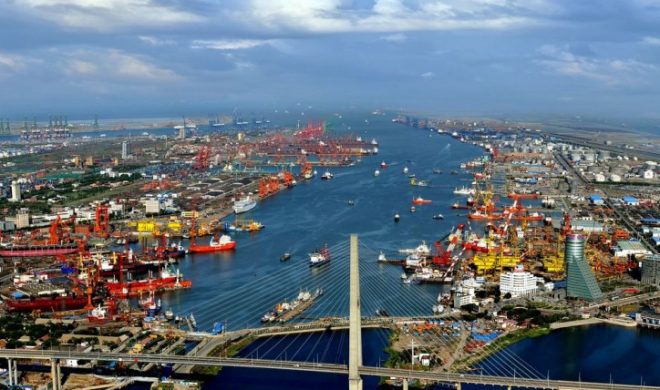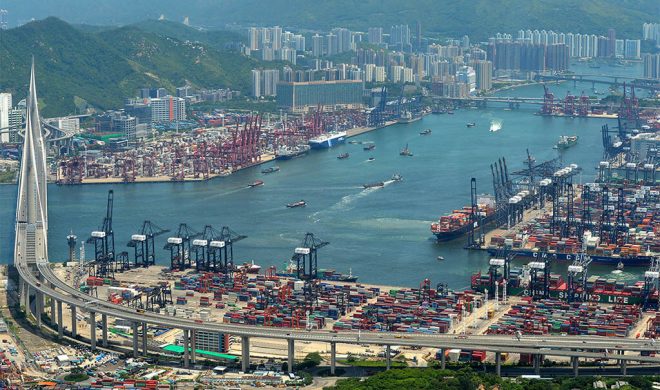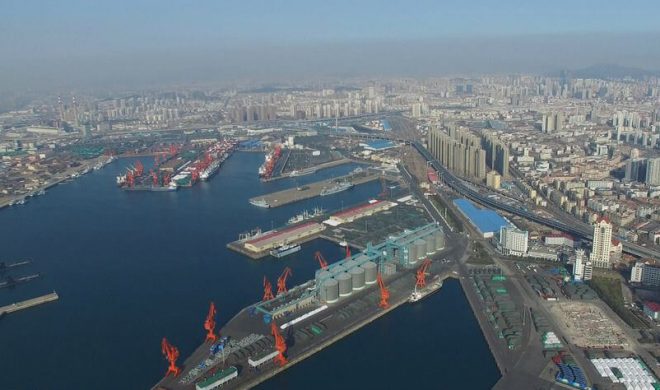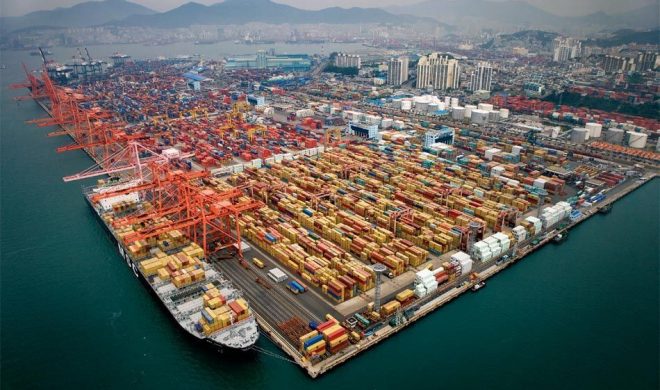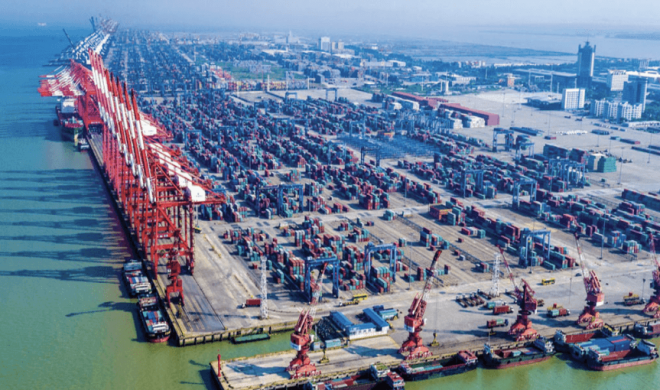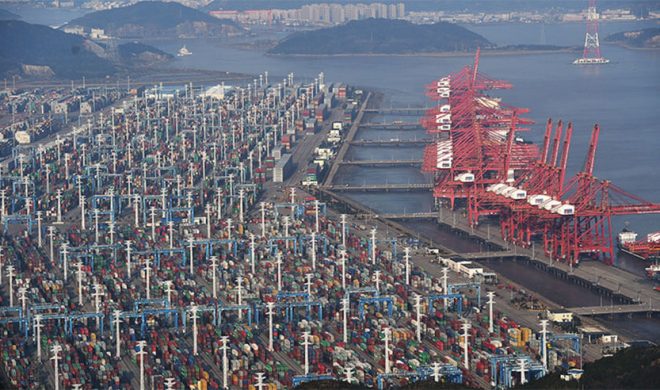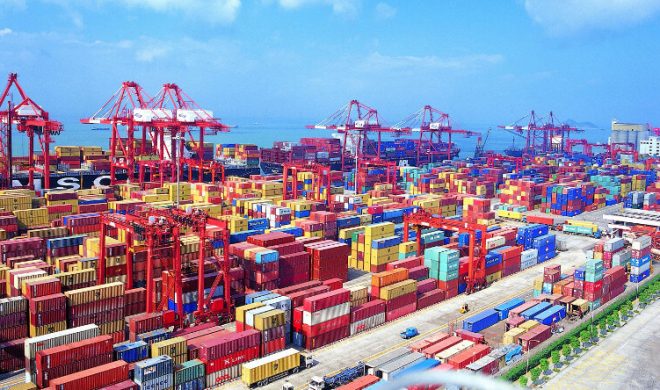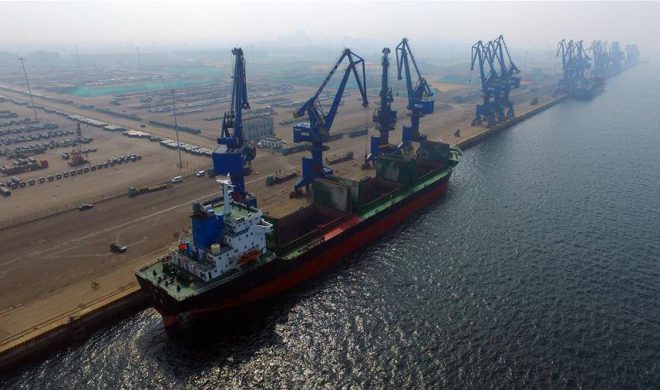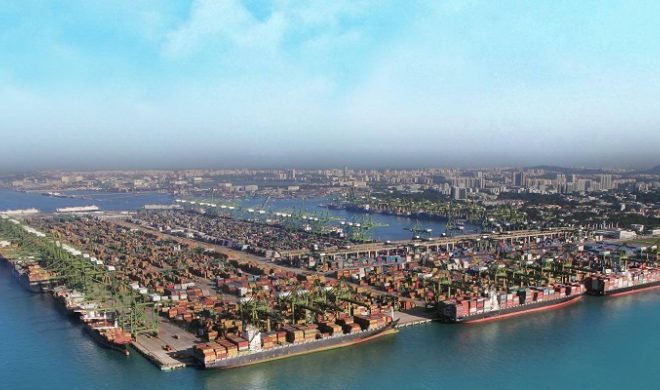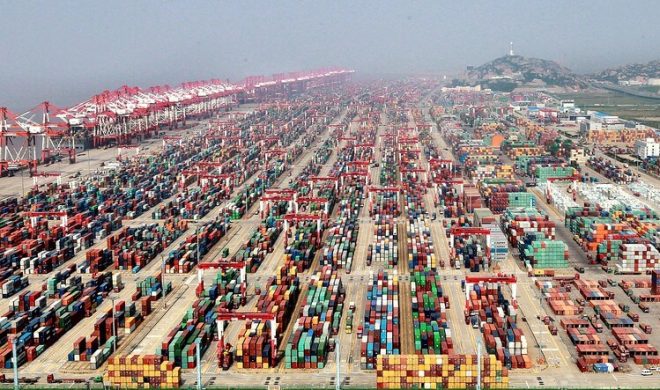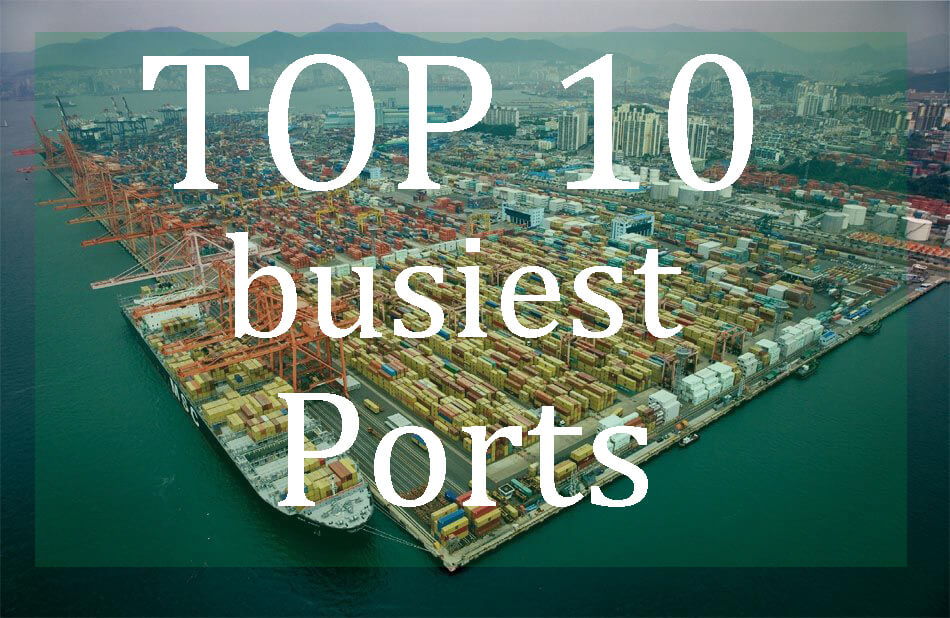
The top 10 busiest ports in the world.
Because the history of port construction is very long, generally accompanied by the process of urbanization. Therefore, the actual area and size of the port are difficult to define. Many ports are distributed in multiple areas of a city and are constantly expanding.
So the actual area and size of the port are difficult to count.
Containers are the standard unit of measurement for modern transportation. The volume of containers reflects the vitality and scale of a port. The higher the container volume, the stronger the port’s carrying capacity, which means the larger the port.
So the top 10 busiest ports in the world can equate to the world’s top 10 largest ports.
The following list data is based on the annual port container volume ranking. If the latest data changes, the list will also change accordingly to maintain the list’s accuracy.
10Tianjin Port

Tianjin Port is located in Binhai New Area, Tianjin, China, at the western end of the Bohai Bay. It is China's largest artificial deep-water port.
As of 2019, the total length of the Tianjin coastline is 32.7 kilometers, with a water area of 336 square kilometers and a land area of 131 square kilometers.Tianjin Port is composed of 5 port areas: North Xinjiang Port Area, South Xinjiang Port Area, East Xinjiang Port Area, South Port Economic Area, and South Port Area East Area.
In 2018, the cargo throughput of Tianjin Port was 440.64 million tons, which was flat year-on-year; among the top ten ports in the world in terms of cargo throughput, Tianjin Port ranked ninth.
In 2018, the world's first unmanned electric truck was put into trial operation in Tianjin Port.
Tianjin Port Data
- Country
- China
- Official name
- 天津港
- Other name
- Tanggu Port
- Location
- Bohai Bay, Binhai New Area, Tianjin
- Year of opening
- 1404 AD
- Industrialization date
- 1860
- Status
- In use
- Operator
- Tianjin Port Group Ltd
- Port type
- Deepwater seaport, Riverport
- Features
- Smart port, Artificial port
- Region
- East Asia
- Sea area
- Bohai Sea
- Annual container volume
- 16 million TEU (2018)
- Annual cargo tonnage
- 446 million tons (2018)
- Water area
- 336 square km (2019)
9Hong Kong Port

Hong Kong Port is located in the Pearl River Delta in the South China Sea, and is a deep-water seaport. It is close to Shenzhen Port and Guangzhou Port.
Hong Kong Port, which has ranked first in container throughput in the world for several consecutive years, was second in 2006 after being replaced by Singapore in 2005, with a throughput of 23.234 million TEUs, a year-on-year growth rate 2.8%.
Hong Kong Port is one of the busiest and most efficient international container ports in the world and a major hub port in the global supply chain. There are currently more than 80 international liners providing about 500 container liner services per week, connecting Hong Kong Port to more than 500 destinations around the world.
Hong Kong Port Data
- Country
- China
- Location
- Pearl River Delta, HongKong ,China
- Official name
- 香港港
- Status
- In use
- Operator(s)
- Hong Kong Maritime and Port Board (HKMPB)
- Port type
- Deepwater seaport
- Features
- Natural port, Artificial port, Free port
- Region
- East Asia
- Sea area
- South China Sea
- Annual cargo tonnage
- 281 million tons (2017)
- Annual container volume
- 19.6 million TEU (2018)
8Qingdao Port

Qingdao Port is located on the shore of Jiaozhou Bay, Qingdao City, Shandong Province, China, on the edge of the Yellow Sea, across the sea from Japan and the Korean Peninsula, and is an important international trading port along the Yellow River Basin in China.
As of 2011, Qingdao Port has 18 terminals and 69 berths. As of the end of 2018, Qingdao Port has more than 160 container routes.
In 2017, Qingdao began the construction of a smart port.On May 11, 2017, the first phase of the fully automated container terminal in Qingdao Port was put into commercial operation.On November 28, 2019, Qingdao Port's fully automated terminal (Phase II) went into operation.
In 2019, the cargo throughput of Qingdao Port exceeded 515 million tons, an increase of 6.1% year-on-year, and the container throughput was 21.01 million TEU, an increase of 8.8% year-on-year; operating income was 12.164 billion yuan, an increase of 3.6% year-on-year; 3.79 billion yuan, an increase of 5.5% year-on-year.
Qingdao Port Data
- Country
- China
- Location
- Jiaozhou Bay, Qingdao City, Shandong Province
- Official name
- 青岛港
- Year of opening
- 1415 AD
- Industrialization date
- 1892
- Status
- In use
- Operator
- Qingdao Port (Group) Co., Ltd.
- Port type
- Deepwater seaport
- Features
- Smart port, Natural port, Artificial port
- Region
- East Asia
- Sea area
- Yellow Sea
- Annual container volume
- 21 million TEU (2019)
- Annual cargo tonnage
- 515 million tons (2018)
- Water area
- 420 square km (2004)
7Busan Port

Busan Port is located on the southeastern coast of South Korea, bordering the Straits of Korea in the southeast and NAKTONG River in the west. It faces Japan’s Tsushima Island and is the largest port in South Korea as of 2020.
It is the hub of land, sea and air transportation in South Korea, as well as a financial and commercial center, and plays an important role in South Korea's foreign trade.
It was developed, managed and operated by the Busan Port Authority (BPA) established in 2004.
Today, Busan Port is mainly composed of 6 ports-North Port, South Port, Ganchuan Port, Dazhongpu Port, Busan New Port International Passenger Terminal and Jinman Container Terminal.In 2017 Busan processed more than 20 million TEUS.
Busan Port Data
- Country
- South Korea
- Location
- Busan, South Korea
- Official name
- 부산항
- Other name
- Pusan port
- Status
- In use
- Maintained by
- Busan Port Authority (BPA)
- Port type
- Deepwater seaport, Riverport
- Features
- Natural port, Artificial port
- Region
- East Asia
- Sea area
- Korea strait
- Annual cargo tonnage
- 400 million tons (2017)
- Year of opening
- 1270-1394 AD
- Industrialization date
- 1876
- Annual container volume
- 21.6 million TEU (2018)
6Guangzhou Port

Guangzhou Port is a port in Guangzhou City, Guangdong Province, China. It is located in the north of the South China Sea, in the center of the Pearl River Delta, close to Macau and Hong Kong.
In ancient China's Qin and Han Dynasties (206-202 BC), the ancient port of Guangzhou was a port for China's foreign trade.
Since 1978, the Port has developed into an important port of foreign trade in southern China.
In 2017, the cargo throughput of Guangzhou Port (including Guangzhou Sea Port and Inland River Port) was 590 million tons, the container throughput was 20.37 million TEUs.
As of August 2018, It has reached more than 400 ports in more than 100 countries and regions in the world, and the port's cargo throughput in 2018 ranked fifth in the world.
Guangzhou Port Data
- Country
- China
- Official name
- 广州港
- Location
- Pearl River Delta, Guangzhou, Guangdong
- Status
- In use
- Operator
- Guangzhou Port Group Co. Ltd
- Port type
- Deepwater seaport, Riverport
- Features
- Smart port, Natural port, Artificial port
- Region
- East Asia
- Sea area
- South China Sea
- Year of opening
- 206—202 BC
- Industrialization date
- 1842
- Annual container volume
- 21.8 million TEU (2018)
- Annual container volume
- 509 million tons (2017)
5Ningbo Zhoushan Port

Ningbo Zhoushan Port was originally two ports, Ningbo Port and Zhoushan Port. They merged on January 1, 2006.The Port is located in Hangzhou Bay, East China Sea, and is a port of Ningbo and Zhoushan in Zhejiang Province, China.
It is composed of 19 port areas including Beilun, Yangshan, Liuheng, Qushan and Chuanshan. It has a total of more than 620 production berths, including nearly 160 large berths above 10,000 tons and large, special There are more than 90 large-scale deep-water berths.
As of June 2018, Ningbo Zhoushan Port has a total of nearly 250 container routes, including more than 120 ocean routes, with an average monthly flight of about 1,500 flights.
In 2019, The Port completed a cargo throughput of 1.119 billion tons, ranking first in the world for seven consecutive years.
In 2019, The Port completed container throughput of over 27.53 million TEU.
Ningbo Zhoushan Port Data
- Country
- China
- Location
- Hangzhou Bay, Ningbo & Zhoushan, Zhejiang
- Status
- In use
- Operator(s)
- Ningbo Zhoushan Port Co., Ltd.
- Port type
- Deepwater seaport, Riverport
- Features
- Natural port, Artificial port
- Region
- East Asia
- Sea area
- East China Sea
- Year of opening
- 738 AD
- Industrialization date
- 1842
- Annual container volume
- 27.6 million TEU (2019)
- Annual container volume
- 1.119 billion tons(2019)
4Shenzhen Port

Shenzhen Port is a port in Shenzhen, Guangdong Province, China, located in the southern Pearl River Delta of Guangdong Province, close to Hong Kong.In the 1980s, Shenzhen Port built bulk and general cargo berths and general terminal berths.
Shenzhen Port has 8 port areas including Shekou, Chiwan, Mawan, Dongjiaotou, Yantian, Fuyong Airport, Shayuyong and Inland River. The port water area is 106 square kilometers and the land area is 16 square kilometers.
As of October 2018, Shenzhen Port has opened a total of 239 international container liner routes, covering the world's twelve largest shipping areas, and leading to more than 300 ports in more than 100 countries and regions.
In 2018, the cargo throughput of Shenzhen Port was 251 million tons.And handled 27.7 million TEU.
Shenzhen Port Data
- Country
- China
- Location
- Pearl River Delta, Shenzhen, Guangdong
- Official name
- 深圳港
- Status
- In use
- Port type
- Deepwater seaport
- Features
- Natural port, Artificial port
- Region
- East Asia
- Sea area
- South China Sea
- Water area
- 106 square km (2005)
- Annual container volume
- 27.7 million TEU (2018)
- Annual container volume
- 251 million tons (2018)
3Tangshan Port

Tangshan Port is located in Tangshan City, Hebei Province, China. It is an artificial deep-water international seaport and the fastest growing port in China.
It is composed of three independent port areas: Jingtang Port, Caofeidian Port and Fengnan Port, which are managed separately, but are regarded as the same port for statistical purposes.
Tangshan Port is 400 nautical miles away from Incheon, South Korea, 680 nautical miles away from Nagasaki, Japan, and 935 nautical miles away from Kobe. It has smooth transportation routes with ore exporting countries such as Australia, Brazil, Peru, South Africa and India.
In 2019, Tangshan Port completed 667.4 million tons of cargo throughput, a year-on-year increase of 3.08%. The port's cargo throughput ranks third in the world.
Tangshan Port Data
- Country
- China
- Region
- East Asia
- Status
- In use
- Official name
- 唐山港
- Other name(s)
- Jingtang port, Caofeidian port, fengnan port
- Location
- Tangshan City, Hebei Province, China
- Operator(s)
- Tangshan Port Group Co., Ltd.
- Opened
- 1989
- Sea area
- Bohai Sea
- Port type
- Deepwater seaport, Riverport
- Features
- Smart port, Artificial port
- Annual container volume
- 29.4 million TEU (2019)
- Annual cargo tonnage
- 656 million tons (2019)
- Industrialization date
- 1984
2Singapore Port

Singapore Port is located at the intersection of Malacca Strait and Singapore Strait, on the southern coast of Singapore.
The port terminals are located in Tanjong Pagar, Keppel, Blarney, Pasir Panjang, Sembawang and Jurong. The port is a transit point for about 140,000 cargo ships every year, and can connect 600 ports in 123 countries around the world.
The port of Singapore has 204 terminals, and the cranes equipped with the terminals can load and unload cargo, which gives the Singapore port a maritime trade control function, which connects many countries together by waterway.
In 2018, the Port handled 36.6 million TEU.
Singapore Port Data
- Country
- Singapore
- Location
- Shanghai, China
- Year of opening
- late 13th century
- Industrialization date
- 1819
- Status
- In use
- Operator(s)
- PSA International
- Port type
- Deepwater seaport
- Features
- Natural port, Artificial port
- Sea area
- Singapore Strait, Malacca Strait
- Annual container volume
- 36.6 million TEU (2018)
- Annual container volume
- 630 million tons (2018)
1Shanghai Port

Shanghai Port is located in Shanghai, China, facing the East China Sea.
It is China's largest sea port and an inland port of China's longest river (the Yangtze River). As an inland port, it connects many cities on the Yangtze River in China. As a sea-port, it connects more than 500 ports in 214 countries and regions, and has more than 80 international routes.
The old Shanghai Port is located at the estuary of the Yangtze River, but there is no deepwater port. In 2002, Yangshan Deepwater Port began to be built.
Yangshan Deepwater Port is in Hangzhou Bay, it is a part of Shanghai Port, connected to Shanghai City by Donghai Bridge.As of 2005, the water area of Shanghai Port was 3620.2 square km (excluding Yangshan Port).
In 2019 Shanghai port handled 43.3 million TEU.
Shanghai Port Data
- Country
- China
- Location
- Shanghai, China
- Official name
- 上海港
- Year of opening
- 589 AD
- Industrialization date
- 1842
- Status
- In use
- Maintained by
- Shanghai International Port Company Ltd.
- Port type
- Seaport, River-port
- Features
- Smart port, Natural port, Artificial port
- Sea area
- East China Sea
- Annual container volume
- 43.3 million TEU (2019)
- Annual container volume
- 702 million tons


